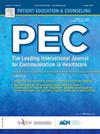Digital divide in social media use among cancer survivors and the moderation role of offline social support
IF 3.1
2区 医学
Q2 PUBLIC, ENVIRONMENTAL & OCCUPATIONAL HEALTH
引用次数: 0
Abstract
Objectives
Social media has transformed cancer care by expanding access to information and support, yet disparities in its use persist. This study examined 1) social media use behavior prevalence and social media engagement levels among different age and race/ethnicity cancer survivor subgroups and 2) how age and race/ ethnicity interact with offline social support and influence cancer survivors’ social media engagement.
Methods
We conducted a secondary cross-sectional analysis of cancer survivors using nationally representative data from the Health Information National Trends Survey 5 (Cycles 1–4; 2017–2020; n = 2579). We used weighted chi-square tests and multinomial logistic regression models to analyze the associations between age, race/ethnicity, and offline social support with social media engagement levels (none, passive, or active).
Results
Patterns of social media use varied significantly across age and race/ethnicity. Young adult cancer survivors had significantly higher level of active social media engagement (F=18.67, p < .001) compared to other age groups. Offline social support moderated these patterns: as age increased, survivors with offline support were less likely to engage actively (RRR=.9, p < .001). Hispanic survivors with offline support demonstrated significantly higher active engagement compared to White survivors (RRR=65, p < .001).
Conclusions
Social media engagement among cancer survivors is shaped by the intersection of age, race/ethnicity, and the availability of offline social support. Offline and online support may act as complementary resources, particularly for young adults and Hispanic groups.
Practice Implications
Healthcare providers should assess offline social support when developing digital health interventions. Tailored strategies are needed to enhance equitable access to online health information and peer support, particularly among young adults and ethnic minority cancer survivors.
癌症幸存者社交媒体使用中的数字鸿沟和线下社会支持的调节作用
社交媒体通过扩大获取信息和支持的渠道,改变了癌症治疗方式,但其使用方面的差距仍然存在。本研究考察了1)不同年龄和种族/民族癌症幸存者亚组的社交媒体使用行为流行程度和社交媒体参与水平;2)年龄和种族/民族如何与线下社会支持相互作用并影响癌症幸存者的社交媒体参与。方法:我们使用健康信息国家趋势调查5(周期1-4;2017-2020;n = 2579)的全国代表性数据对癌症幸存者进行了二次横断面分析。我们使用加权卡方检验和多项逻辑回归模型来分析年龄、种族/民族和线下社会支持与社交媒体参与水平(无、被动或主动)之间的关系。结果社交媒体的使用模式在不同年龄和种族/民族之间存在显著差异。年轻成年癌症幸存者的积极社交媒体参与水平显著较高(F=18.67, p <; )。001)与其他年龄组相比。线下社会支持调节了这些模式:随着年龄的增长,有线下支持的幸存者更不可能积极参与(rr =.9, p <; .001)。与白人幸存者相比,有线下支持的西班牙裔幸存者表现出显著更高的积极参与(RRR=65, p <; .001)。癌症幸存者的社交媒体参与度受到年龄、种族/民族和线下社会支持的影响。离线和在线支持可以作为补充资源,特别是对年轻人和西班牙裔群体。实践意义卫生保健提供者在制定数字卫生干预措施时应评估线下社会支持。需要有针对性的战略来促进公平获得在线健康信息和同伴支持,特别是在年轻人和少数族裔癌症幸存者中。
本文章由计算机程序翻译,如有差异,请以英文原文为准。
求助全文
约1分钟内获得全文
求助全文
来源期刊

Patient Education and Counseling
医学-公共卫生、环境卫生与职业卫生
CiteScore
5.60
自引率
11.40%
发文量
384
审稿时长
46 days
期刊介绍:
Patient Education and Counseling is an interdisciplinary, international journal for patient education and health promotion researchers, managers and clinicians. The journal seeks to explore and elucidate the educational, counseling and communication models in health care. Its aim is to provide a forum for fundamental as well as applied research, and to promote the study of organizational issues involved with the delivery of patient education, counseling, health promotion services and training models in improving communication between providers and patients.
 求助内容:
求助内容: 应助结果提醒方式:
应助结果提醒方式:


